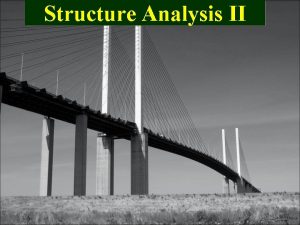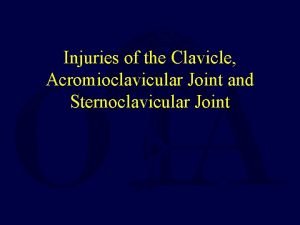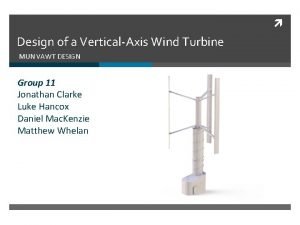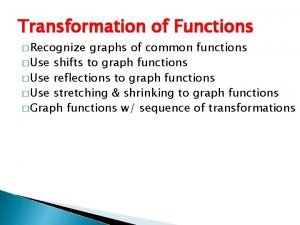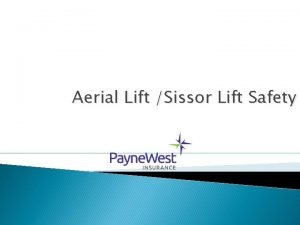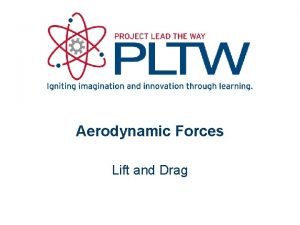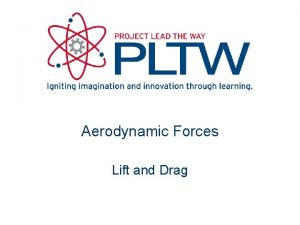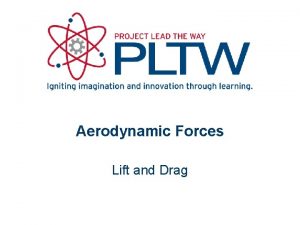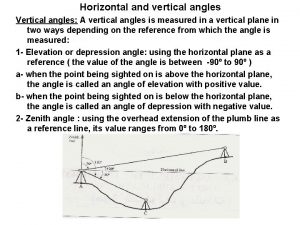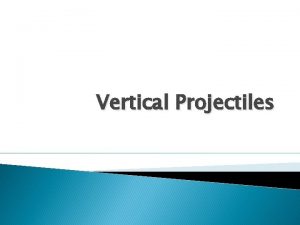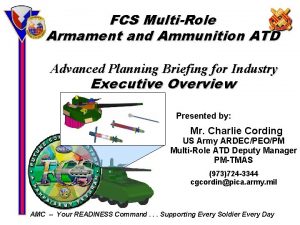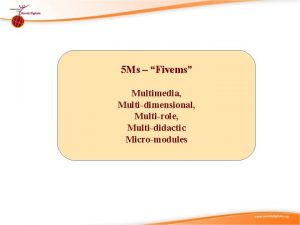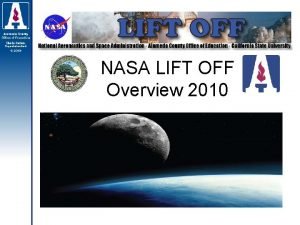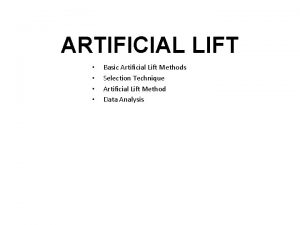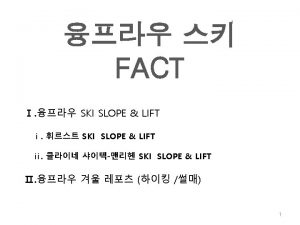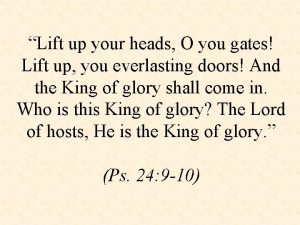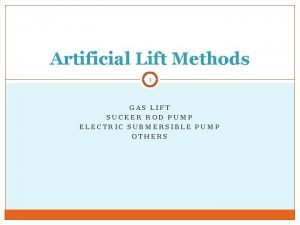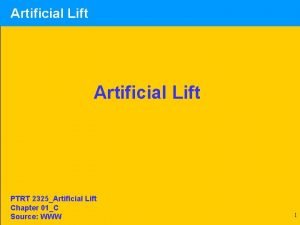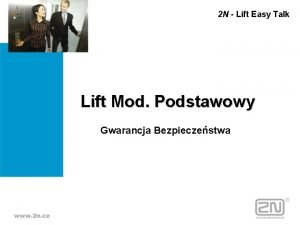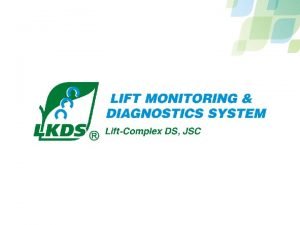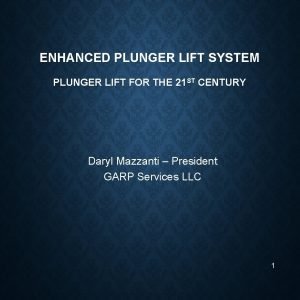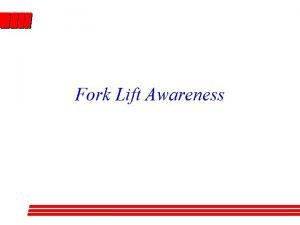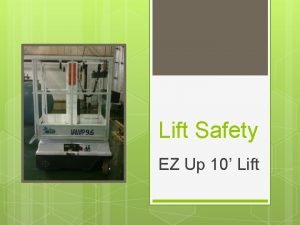Future Vertical Lift Insights From The Joint MultiRole




























- Slides: 28

Future Vertical Lift: Insights From The Joint Multi-Role Technology Demonstrator

Presented at: Center for Strategic and International Studies Joint Multi Role Technology Demonstration (JMR TD) Program Update DISTRIBUTION STATEMENT A. Approved for public release; distribution is unlimited. Presented by: Mr. Dan Bailey Date: 23 Sep 2016 JMR TD Program Director U. S. Army Aviation and Missile Research, Development, and Engineering Center

Joint Multi-Role (JMR) Technology Demonstrator (TD) Design, build, and fly two flight demonstration aircraft Air Vehicle Demo (AVD) Execute two sub-system technology demonstrations Conduct three increasingly complex architecture MILESTONES Bell Sikorsky-Boeing FY 11 FY 12 FY 13 FY 14 FY 15 FY 16 FY 17 FY 18 FY 19 FY 20 Gov. Configurations Operational Analysis Karem AVX Industry Configurations Air Vehicle Demo Mission Systems Architecture Demo (MSAD) Yesterday Tomorrow Transition Mission Systems Arch Demo JCA Development FVL Spec Evolution Outcomes: • Platform level demos of advanced rotorcraft configurations to address FVL CS 3 capability gaps • Parametric government FVL CS 3 design solutions and informed workforce for effective requirements trades and acquisition decisions DVE-M SUMIT MIS/ROSAS • Cost, sustainment, and survivability analysis to inform FVL CS 3 decision points FASTR • Closed Hardware Architectures • Closed Software Architectures • Vendor prescribed modularity • Tightly Coupled Hardware/Software • Many Unique Integrations • Hardware Reuse (LRU Level) • Accidental Software Reuse • Document oriented procurement • Isolated analysis • Test–fix-test mentality UCS UH-60 V MH-60 R/S • • Gov’t Prescribed Modularity Open Hardware Architectures Open Software Architectures Software portability & interchangeability Shared Integrations Strategic Reuse (HW, SW, artifacts) Model-based procurement & qualification Architecture Centric Virtual Integration Process • Standards, reference architectures and tools to implement truly open architectures that are affordable, efficient, effective, and enduring over the life of FVL CS 3 Demonstrating advanced configurations, enabling technologies and architectures 3

Key Points of the AVD Effort • • • 4 Broad Agency Announcement / Model Perf Spec (MPS) requirements: – MPS represents a snapshot of a desired FVL-M capability − 230+ kt – 6 K / 95 F HOGE at mission payload – 424 km combat radius with a 30 minute loiter – 4 crew + 12 troops (335 lb/troop) – Self-deploy (2100 nm) – Highly integrated system – self protection; 360 SA; full DVE Flight test efforts will implement commercial airworthiness processes Enables significant learning with regards to – Advanced technology implementation on high speed air vehicle configurations – The refinement of analytical methods for coaxial and tilt rotor configurations – The efficiencies a commercial airworthiness approach – The extent to which the MPS describes an affordable FVL solution – The collaboration of the rotary wing enterprise to provide an advanced, efficient, affordable aviation weapon system

Mission Systems Architecture Demo (MSAD) We need tools that help do the job, not become the job! ► Effective Acquisition – Competitive Opportunities – Reduced Vendor Lock ► Efficient Integration – Improved Affordability – Reduced Time to Field ► Improved Capabilities – Portable / Reusable – Interoperable – Security Assurance – Upgradeable / Resilient – Planned Variability ► Efficient Qualification Purpose: Ensure that a potential FVL Program of Record (Po. R) has the processes, tools and standards necessary to specify, design, analyze, implement, acquire, qualify, certify and sustain a mission systems architecture that meets the performance requirements and business goals of the Do. D. Approach: – Leverage existing standards where possible – Execute a series of increasingly complex demos – Examine and assess maturity, applicability, and effectiveness of emerging SW engineering and development techniques – Learn by doing FY 13 14 15 16 17 18 19 JCA DEMO AIPD Capstone Demo AIPD – Architecture Implementation Process Demo 5 20 Focus Areas: – Implementation of Open System Architectures (OSA) • Joint Common Architecture (JCA) • FACE™ Technical Standard – Application of Model Based Engineering (MBE) • Model-based specification/acquisition – Execution of an Architecture Centric Virtual Integration Process (ACVIP) • Predictive performance assessment

6

MPS Aircraft Joint Multi-Role Technology Demonstrator Sikorsky – Boeing JMR Program September 23, 2016 This research was partially funded by the Government under Agreement No. W 911 W 6 -13 -2 -0003. The U. S. Government is authorized to reproduce and distribute reprints for Government purposes notwithstanding any copyright notation thereon. The views and conclusions contained in this document are those of the authors and should not be interpreted as representing the official policies, either expressed or implied, of the Aviation Applied Technology Directorate or the U. S. Government. Distribution Statement A: Approved for public release; distribution is unlimited. This briefing contains no technical data controlled by the EAR or ITAR © Unpublished Work, The Boeing Company & Sikorsky Aircraft Corporation 2015. All rights reserved.

SIKORSKY / BOEING SB>1 DEFIANT Joint Multi-Role Technology Demonstrator X 2 TM Technology Advanced Rigid Rotor System Advanced Drive System Composite Fuselage Manual Blade Fold Pusher Prop with Clutch Active Vibration Control Lift Offset Co-Axial Rotor Retractable Gear Crew of four Fly-by-Wire Flight controls Active Rudders and Elevators Cabin for 12 Combat equipped troops Distribution Statement A: Approved for public release; distribution is unlimited. This briefing contains no technical data controlled by the EAR or ITAR, Information on this page is subject to the restrictions on the cover page of this document. © Unpublished Work, The Boeing Company & Sikorsky Aircraft Corporation 2015. All rights reserved. 8

RISK REDUCTION ACTIVITIES Joint Multi-Role Technology Demonstrator Distribution Statement A: Approved for public release; distribution is unlimited. This briefing contains no technical data controlled by the EAR or ITAR, Information on this page is subject to the restrictions on the cover page of this document. © Unpublished Work, The Boeing Company & Sikorsky Aircraft Corporation 2015. All rights reserved. 9

TESTING FACILITIES Joint Multi-Role Technology Demonstrator Flight Demonstrator Systems Integration Lab Propulsion System Test Bed West Palm Beach Test Facility Distribution Statement A: Approved for public release; distribution is unlimited. This briefing contains no technical data controlled by the EAR or ITAR, Information on this page is subject to the restrictions on the cover page of this document. © Unpublished Work, The Boeing Company & Sikorsky Aircraft Corporation 2015. All rights reserved. 10

FABRICATION PROGRESS Joint Multi-Role Technology Demonstrator Distribution Statement A: Approved for public release; distribution is unlimited. This briefing contains no technical data controlled by the EAR or ITAR, Information on this page is subject to the restrictions on the cover page of this document. © Unpublished Work, The Boeing Company & Sikorsky Aircraft Corporation 2015. All rights reserved. 11

Over 65% Built Export Classification: NO TECH DATA 12

Vertical Lift Consortium Open Systems for Future Vertical Lift Opportunities and Challenges www. verticalliftconsortium. org Chris Van Buiten for Mr. Nick Lappos Chairman of the Board 1

FVL will be an Optionally Piloted Vehicle 2 Crew Mode Reduction in Training Requirements Level 1 Handling Qualities Operation in Degraded Visual Environment MUM-T (Manned Unmanned Teaming) Improved Safety 1 Crew Mode Minimally Trained Operator Flexible, Mission Oriented Interface Operator Located in Cockpit or Cabin 0 Crew Mode Minimally Trained Off board Operator Flexible, Mission Oriented Interface Management of Multiple Vehicles by One Operator Ability to Operate without Data Link

Required OPV Computing Power Open systems enable rapid, low cost improvement Year 2000 15 KW 900 lbs $1 M 2005 5 KW 300 lbs $400 K More Capability, Lower Cost 2013 2016 200 W 30 lbs $60 K 2 X Cores

FVL Capability APPS for the Fleet Enabled by Open Software & Hardware $ $$$

But……. Systems will become fundamental elements of the FVL airworthiness Can these be open as well?

FVL Component Sizing and Life LOAD Traditional Sizing: Large heavy parts, Low lives Actual Usage: Smaller parts, tailored lives ACTUAL FROM TEST Real time computed loads TIME Can these flight critical systems be as open? This Pag

FVL will Use Load Limiting Controls LOAD Traditional Sizing: Large heavy parts, Low lives Managed Usage: Even Smaller parts, longer lives ACTUAL FROM TEST Load limiting control TIME Can these flight critical systems be as open?

FVL will Use Fleet Data to Make Critical Decisions Sensors Computation Software Algorithms On Board & Off Board Can these flight critical systems be as open?

Takeaways FVL will provide game changing capabilities to the warfighter Open systems will enable constant capability expansion Success depends on new business and contracting models FVL airworthiness will become cyber-physical not just physical Need to define ownership boundaries

Future Vertical Lift: Insights From The Joint Multi-Role Technology Demonstrator

2 3 Risk of Successful FVL CS 3 Po. R JMR TD S&T Portfolio Capability Sets 1 -3 Min/Max Attributes Design Study (2014) Performance analysis for USAACE CDID (2014) Why Is This Different? Configuration Trades & Analysis (2012) Model Perf. Spec (2013) Post-ID&RR modeling of MPS and TD (ongoing) Initial Design & Risk Reviews (ID&RR) with parallel Gov. designs (2014) Legend: FVL – Future Vertical Lift JMR TD – Joint Multirole Technology Demonstration ASSP – Aviation S&T Strategic Plan USAACE – US Army Aviation Center of Excellence CDID – Capability Development Integration Directorate TRAC – TRADOC Analysis Center Po. R – Program of Record Ao. A – Analysis of Alternatives CDD – Capability Development Document RFP – Request for Proposal CS – Capability Set ICD – Initial Capability Document DDG – Destroyer Warship • • Vehicle type study for FVL Capability Sets 1 -3 using JMR Excursion 10 (2013) Initial design study for FVL Medium Capability Set using JMR Excursion 1 (2011) Draft CDD Definition; Specification/ RFP (2018) Ao. A Design Iterations & Tech Assessment (2017) Initial FVL Cap. Set defined within Fo. S structure Capability Set 3 Conceptual Design Study (2016) ASSP Re-visit (2013) FVL-Medium S&T Investment Strategy (2012) FVL Light/Heavy Conceptual Design Study (2014) FVL S&T IPT Enterprise commitment and investment planning (ongoing) Notional FVL Family-of. Systems (FOS) Design Study (2015) FVL performance analysis for TRAC Attributes Study (2015) Requirement Example: At ICD approval in April 2013 – Army Assault capable aircraft compatible with the Navy DDG hanger restrictions FVL CS 3 program is initiated based on ICD FVL CS 3 spec and RFP include requirement Industry proposals (concepts) include requirement Source selection uninformed of technical infeasibility Development contract(s) awarded Industry begins concept design refinement Technical infeasibility discovered Requirement, spec, contracts, etc changes required • • • S&T assessment indicates not technically feasible Two separate Capability Sets established Requirement not carried forward into FVL CS 3 Spec Lower risk cost estimating and planning Industry proposals do not include DDG requirement Realistic and more definitive solutions csis. org/isp |

2 4 Knowledge: • Performance, affordability, and scalability of advanced vertical lift configurations • Comprehensive Open Architecture approach, practicality, and usefulness Standards: • FACE/JCA/HOST/OSATE (SAE 5506) • Draft Spec (ADSs 10, 33, 40, 89 relevance) Processes: • Streamlined, more efficient commercial like airworthiness qualification • Digital thread life cycle management • OSA PM implementation handbook Specific Technologies: • Advanced composites/large cell carbon core • Electro-mechanical flight control actuation • Optionally piloted and MUMT algorithms S&T Transition to FVL CS 3 • Directed via GFE, subcontractors, specifications • FVL requirements similarity to JMR TD specification • Use of specific technologies to meet requirements • Limits redesign and use of immature technology Program of Record investments have been deliberate • S&T Incentivize thru Specific technologies identified and aggressive maturation timelines synched cost and schedule metrics “Transition • Evaluation criteria Valley of Death” encouraging mature Pre-MDD – final solution unknown; available pool of mature technology deeper based on large S&T investments technology use S&T csis. org/isp |

2 5 FY 09 FY 10 FY 11 USAACE/FVL Study Phase II FY 12 FY 13 FY 14 FY 15 JMR TD Schedule Model Performance Specification Air Vehicle Config Trades Scope • Trade space description • Prioritize critical attributes/capabilities • Establish success metrics • Assess value and affordability FY 16 Now FY 17 FY 18 FY 19 FY 20 Scope: Design, fabricate and test 2 vehicles • Performance demonstration and verification • Technology characterization • Test predictions and correlation • Value and readiness assessments Air Vehicle Demo BAA Award ID&RR 1 st flight FD&RR Air Vehicle: Maturation of flight performance technologies; operational assessment of advanced configurations Mission Systems: Industry research for effectiveness trades; demo of JCA concept and representative architecture design • Architectures • Communications • Survivability MS Trades • Verify JCA Standard 0. X • Utilize JCA / FACE Ecosystem • Exercise Partial Architecture Centric Virtual Integration Process (ACVIP) • Demonstrate Software Portability, Modularity and Interchangeability Joint Common Architecture (JCA) Development • Incremental efforts designed to investigate specific concepts / technologies • Demonstrate benefits of Model Based Approach & Open Systems Architecture • High level of collaboration between Government and industry • Mature ACVIP tools and processes JCA Demo ACVIP Shadow • Specification for a full mission systems architecture • JCA/FACE Validation • ACVIP Validation Trades and Analyses • Cockpit HMI Technologies • Sensors and Sensor Fusion • Weapons AIPD MSAD Capstone Demo csis. org/isp |

2 6 • Solutions to mission systems architectural and qualification challenges are being informed through numerous open systems initiatives such as: – – – – – • • Future Airborne Capability Environment (FACE™) Complementary Open Systems Army Common Operating Environment (COE) Joint Multi-Role Tech Demonstrator (JMR TD) Mission Systems Architecture Demonstrations (MSAD) Initiatives Modular Integrated Survivability (MIS)/ Route Optimization for Survivability Against Sensors (ROSAS) Alignment of Multinational Open Systems Architectures (AMOSA) Vehicular Integration for C 4 ISR/EW Interoperability (VICTORY) Synergistic Unmanned Manned Intelligent Teaming (SUMIT) Functional Architecture for Strategic Reuse (FASTR) Degraded Visual Environment – Mitigation (DVE-M) Hardware Open Systems Technologies (HOST) Sensor Open Systems Architecture (SOSA) Universal Control Segment (UCS) Open Mission Systems (OMS) Crew Mission Station (CMS) Airworthiness IMPACT UH-60 V. . . AMRDEC, as a founding member of FACE™, has transitioned its focus from development of the FACE technical standard to application and maturation of the FACE™ products US Army Program Executive Officer (PEO) for Aviation has adopted a strategy of incremental migration to the FACE™ technical standard as its response to US Army directives concerning the transition to the Common Operating Environment (COE). – US Army senior leader support and policy direction (COE/FACE™) Blue text: AMRDEC significant involvement csis. org/isp |

2 7 What is Future Vertical Lift (FVL)? What is FVL? A Joint and Department initiative to address vertical lift capability requirements and determine feasible and affordable solutions in support of the Joint Warfighter beyond 2030. Background Key Tenets Integrated IPT Structure Family of Systems Concept Single Service Led Joint Participation Army designated as lead component in JROCM dated 10 April 2013 Informed by JMR-TD Formal Industry Participation PM ITE/FVL Established by PEO AVN May 2015 TCM FVL Established by USAACE Aug 2015 csis. org/isp |

Now Capabilities Assessment FY 13 FY 15 FY 16 Pre-Ao. A Refinement FY 17 MDD FY 18 FY 19 Material Solutions Analysis FY 20 Technology Development (TD) Oct 2016 Projected Road Ahead for FVL Aug 2013 Services Agreed to Analysis Plan M&S Base Case Analysis Materiel Development Decision Ao. A Execution Pre-MDD/Pre-Ao. A Questions RFP Proposal and Approval Contract Award Business Case Analysis-1 Draft Joint CDD (DJCDD) Development CT&A Draft CDD Refinement JMR Technology Demonstrator Phase 1 Spec Air Vehicle Demo MS T&A IDRR Design Mature JCA Development FDRR 1 st flight Analytic Sweet Spot Significant Validation complete JMR Spec Dev Informs CDD JCA Demo Mission Systems Architecture Demo csis. org/isp | Technology Assessment 11 ICD FY 14
 Future continuous and future perfect simple
Future continuous and future perfect simple Future perfect future continuous future perfect continuous
Future perfect future continuous future perfect continuous Vertical lift consortium
Vertical lift consortium Break joint vs spool joint
Break joint vs spool joint Costotransverse ligament
Costotransverse ligament Difference between permanent and temporary joint
Difference between permanent and temporary joint Memorandum joint venture method
Memorandum joint venture method Break joint vs spool joint
Break joint vs spool joint Fibrous joints
Fibrous joints Energy methods in structural analysis
Energy methods in structural analysis Vertical joint
Vertical joint Future perfect
Future perfect Past and present tense
Past and present tense Future continuous and future perfect
Future continuous and future perfect Future nurse future midwife e learning
Future nurse future midwife e learning Present continuous tense to past continuous tense examples
Present continuous tense to past continuous tense examples Present continuous plans
Present continuous plans Perfect infinitive
Perfect infinitive Future plans and finished future actions
Future plans and finished future actions Budoucí čas will
Budoucí čas will Kondicional engleski
Kondicional engleski Future scope of vertical axis wind turbine
Future scope of vertical axis wind turbine Graph stretch and shrink
Graph stretch and shrink Hình ảnh bộ gõ cơ thể búng tay
Hình ảnh bộ gõ cơ thể búng tay Frameset trong html5
Frameset trong html5 Bổ thể
Bổ thể Tỉ lệ cơ thể trẻ em
Tỉ lệ cơ thể trẻ em Chó sói
Chó sói Chụp phim tư thế worms-breton
Chụp phim tư thế worms-breton









